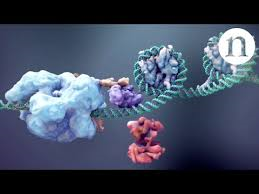
Breaking News
 Outrage Erupts as Released MS-13 Gang Member Kilmar Abrego Garcia...
Outrage Erupts as Released MS-13 Gang Member Kilmar Abrego Garcia...
 The backbone of U.S. capital markets just got the green light to move $100 trillion onchain
The backbone of U.S. capital markets just got the green light to move $100 trillion onchain
 SILVER IS ENTERING A "GENERATIONAL" SQUEEZE.
SILVER IS ENTERING A "GENERATIONAL" SQUEEZE.
Top Tech News
 EngineAI T800: Born to Disrupt! #EngineAI #robotics #newtechnology #newproduct
EngineAI T800: Born to Disrupt! #EngineAI #robotics #newtechnology #newproduct
 This Silicon Anode Breakthrough Could Mark A Turning Point For EV Batteries [Update]
This Silicon Anode Breakthrough Could Mark A Turning Point For EV Batteries [Update]
 Travel gadget promises to dry and iron your clothes – totally hands-free
Travel gadget promises to dry and iron your clothes – totally hands-free
 Perfect Aircrete, Kitchen Ingredients.
Perfect Aircrete, Kitchen Ingredients.
 Futuristic pixel-raising display lets you feel what's onscreen
Futuristic pixel-raising display lets you feel what's onscreen
 Cutting-Edge Facility Generates Pure Water and Hydrogen Fuel from Seawater for Mere Pennies
Cutting-Edge Facility Generates Pure Water and Hydrogen Fuel from Seawater for Mere Pennies
 This tiny dev board is packed with features for ambitious makers
This tiny dev board is packed with features for ambitious makers
 Scientists Discover Gel to Regrow Tooth Enamel
Scientists Discover Gel to Regrow Tooth Enamel
 Vitamin C and Dandelion Root Killing Cancer Cells -- as Former CDC Director Calls for COVID-19...
Vitamin C and Dandelion Root Killing Cancer Cells -- as Former CDC Director Calls for COVID-19...
 Galactic Brain: US firm plans space-based data centers, power grid to challenge China
Galactic Brain: US firm plans space-based data centers, power grid to challenge China
Beyond Crispr -Cas9 Gene editing

Epigenetic Editing
Other proteins—like ones that activate gene expression—can be combined with a crippled Cas9, letting them toggle genes on and off (sometimes with light or chemical signals) without altering the DNA sequence. Epigenetic editing could be used to tackle conditions such as diabetes, acute kidney disease, and muscular dystrophy.
Editing individual base pairs
Crispr system has been modified to edit individual base pairs, one at a time. They designed a brand-new enzyme—one not found in nature—that could chemically convert an A-T nucleotide pairing to a G-C one. David Liu, the Harvard chemist whose lab did the work, estimates that about half of the 32,000 known pathogenic point mutations in humans could be fixed by that single swap.
Creating programmable off switches for Crispr
Researchers have identified 21 unique families of naturally occurring anti-Crispr proteins—small molecules that turn off the gene-editor. But they only know how a handful of them work.

 This is not a bubble.
This is not a bubble.


